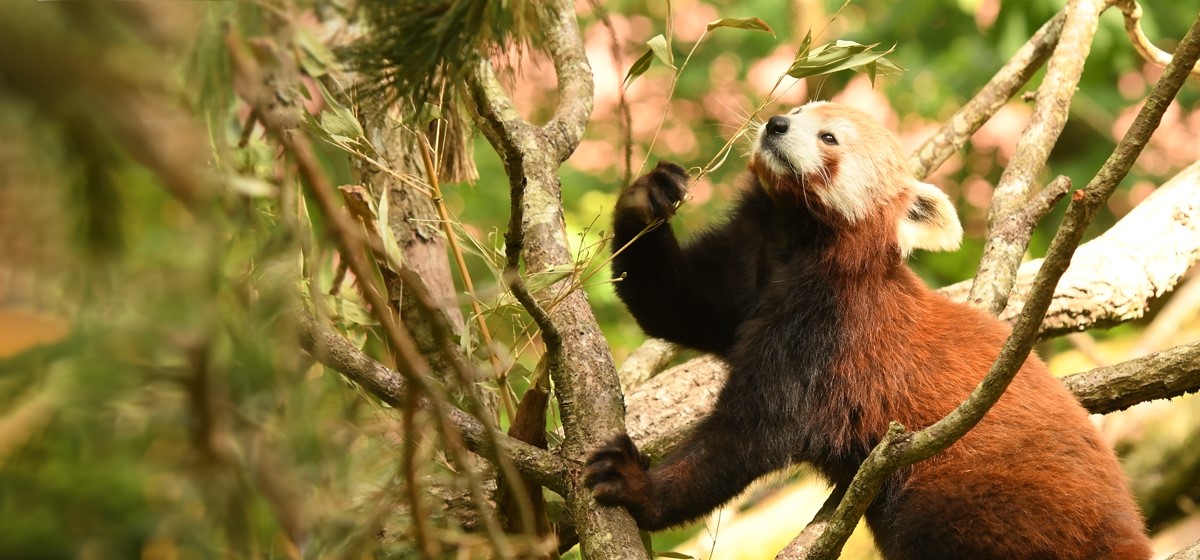Red panda
The red panda is small carnivore that lives in the high-altitude forests of the eastern Himalayas. It can be found in limited areas in five different countries (China, Burma, India, Bhutan and Nepal) and is a flagship species for the region. Like many other species in this region, the red panda is listed as Endangered by IUCN and there might be as few as 2500 individuals left in the wild.
The eastern Himalayas are considered one of the most species-rich regions on the planet, a biodiversity hotspot. They boast a large variety of flora and fauna, including about 10,000 different vascular plants, 300 species of mammal and some 1,000 bird species, a large number of them globally endangered.
The range of threats facing the region and the animals that live there is extremely complex, with deforestation, environmental destruction, illegal hunting and trafficking in endangered animals all having a part to play. Some 200 million people live in the Himalayas and poverty is rife. Local inhabitants use the forests and lands for their livelihood and their lives are inextricably linked with their natural environment, making them particularly vulnerable to environmental destruction. Nordens Ark is working with the Red Panda Network to preserve the red panda and the Eastern Himalayan Broadleaf and Conifer Forest; one of the planet’s richest biodiversity hotspot.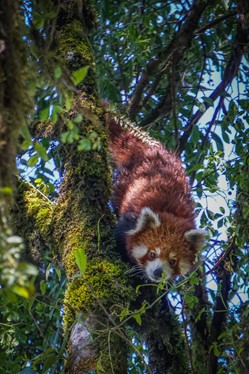
Red panda in the wild. Photo: Ashley Bowen
What we do at Nordens Ark
Reduced biodiversity in nature, and poverty, are problems that are closely interlinked. For this reason, the work with nature conservation and battling poverty must also be linked in a more concrete way.
Nordens Ark is collaborating with Red Panda Network to improve the red panda status while contributing to improving living conditions for the local community by building the Himalayan Habre Center. The Center is a permanent platform for direct engagement of local people in biodiversity conservation through enhancement of their knowledge and skills towards sustainable living.
Local people’s living practice in the region demands huge forest resources for their sustenance livelihood. Over-grazing, unsustainable forestry for timber and fuel, unplanned settlements and agricultural changes mean that the red panda and its habitat are vanishing at an ever increasing rate. One of the biggest problems is the lack of awareness and limited access to sustainable methods.
Through the Himalayan Habre Center, the project will promote a more sustainable lifestyle, focusing on decreasing deforestation, promoting sustainable utilization of the area's natural resources, efficient use of energy and organic production of traditional crops. Different technologies are installed in the center and demonstration installations provides sustainable solutions that will reduce the negative impact on the environment and climate, but also on human health. The local communities were involved in all levels of the project, both in the construction and operation of the facility, as well as in the employment of field staff and guides. A future increased ecotourism will also contribute to increased income for the entire region.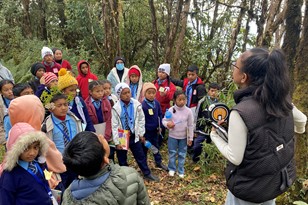
School children come here to learn about bioversity and sustainability. Photo: Wangchu Bhutia /Red Panda Network
News from the project - March 2024
The nature center Himalayan Habre Center is now fully operational and before the turn of the year the first school classes went on a study visit to the center where they learn about why the forest and the red panda are important, how to save water in a sustainable way and plant native plants. It is an important part of teaching the next generation how to take care of our nature.
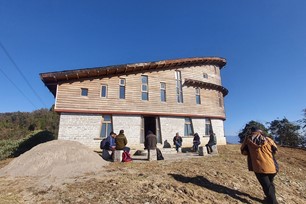
The centre when it was almost finished. Photo: Red Panda Network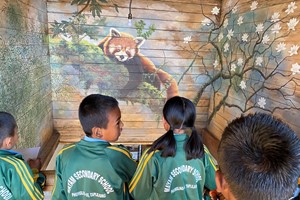
A local school visitng the centre. Photo: Wangchu Bhutia /Red Panda Network


